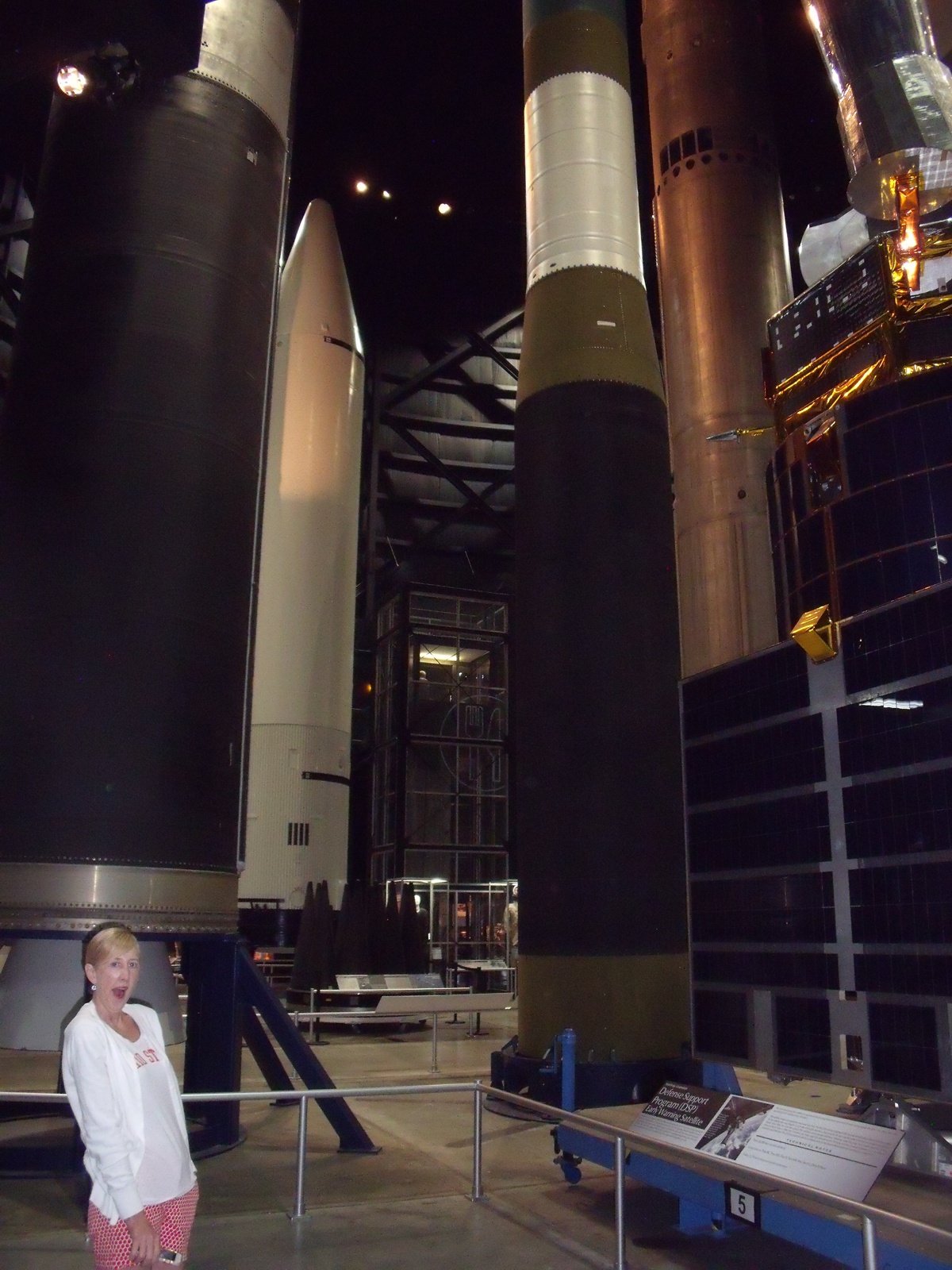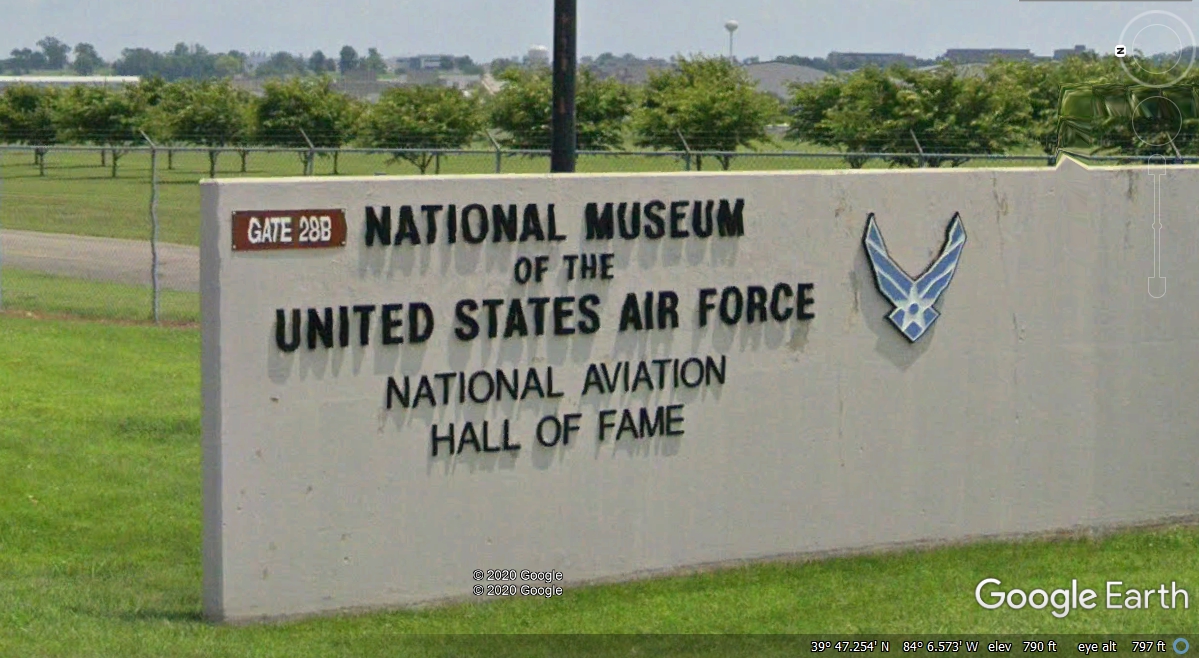
USAF Museum, Wright-Patterson Air Force Base, Dayton, Ohio · · PAGE 33.
July 27, 2019: This is
one of the big days of our trip to the mid-western states. We have come to the
BEST aviation museum in the USA!

Google Earth got this view from outside the fence in front of the museum.
All the hangars for the museum are shown.

It appears the same Google vehicle captured the side view of the Lockheed
F-104 Starfighter.
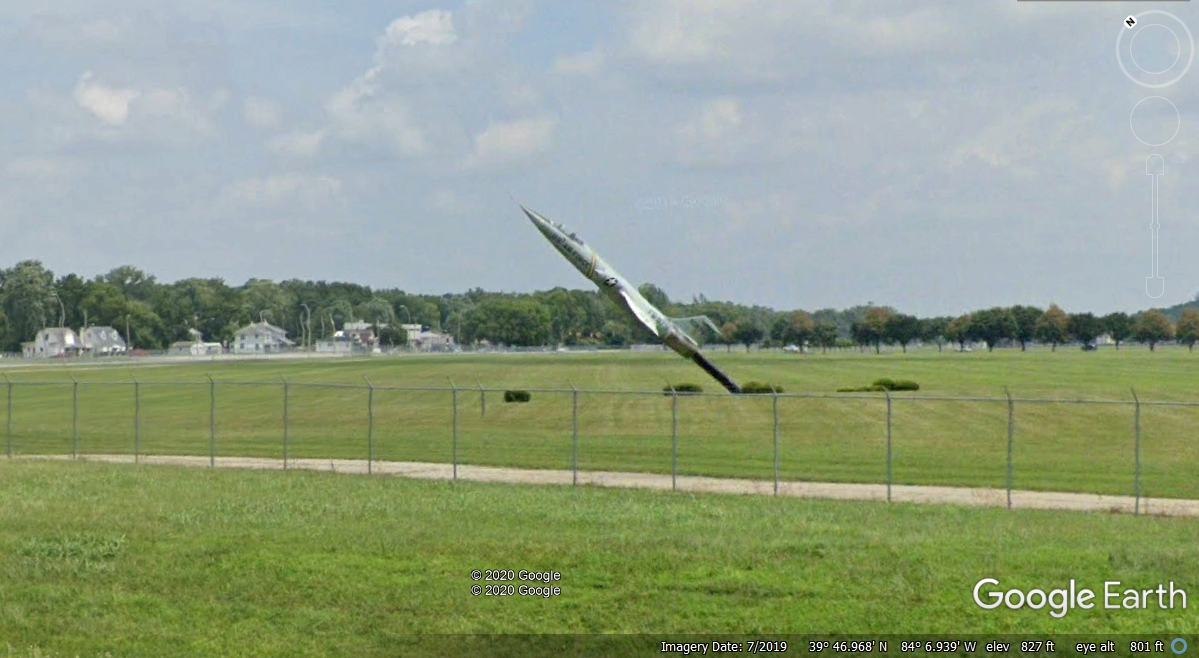
We arrived in the parking lot at 9:03 AM ready to begin today's adventure
in aviation history. Linda took this photo from the parking lot as we were
going inside the museum.
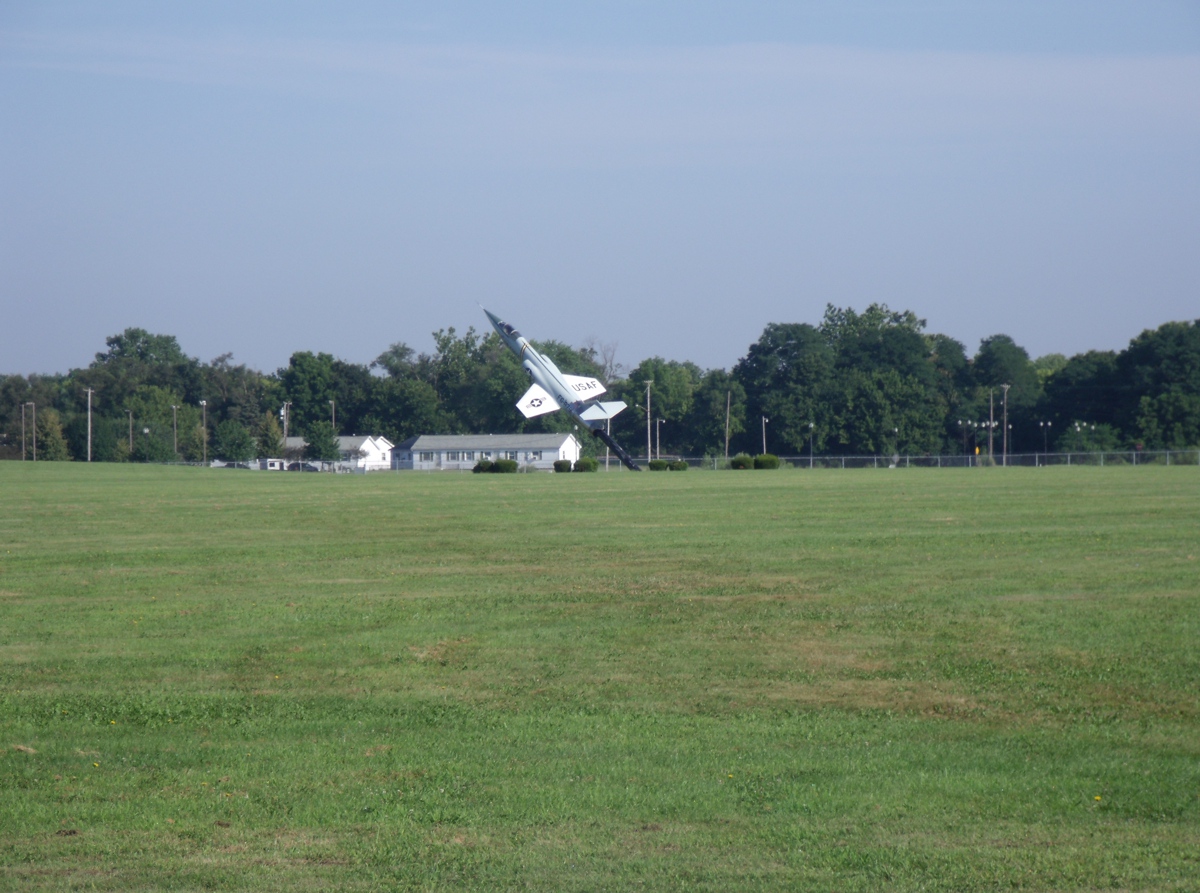
Here is the map of the buildings from their web site.

Linda took this photo of a mural as her first photo inside the
museum. Since the words are not legible in this image, I went to her
original high resolution photo from her camera and posted the next image
below this one with more details visible.
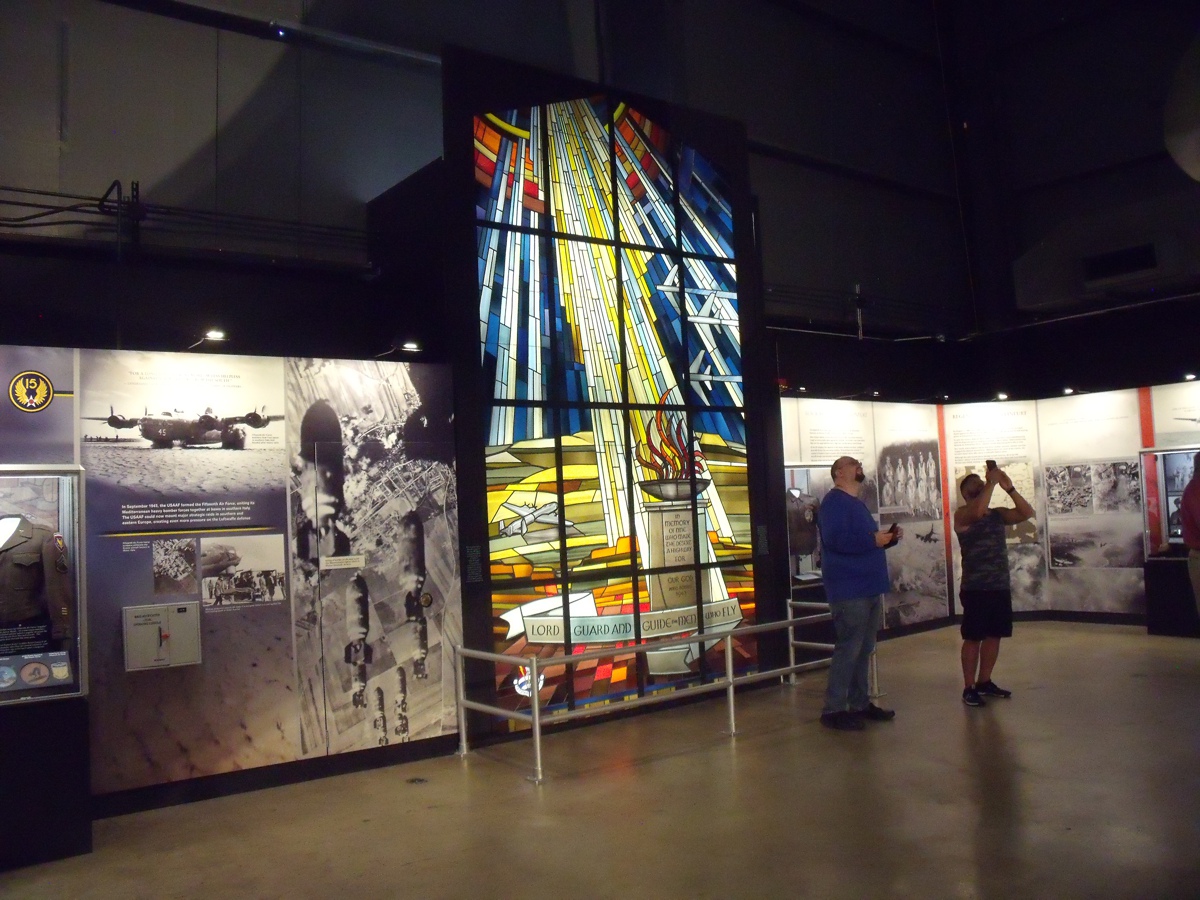
It is an eternal flame and a 1941 prayer for pilots in a stained-glass
image.
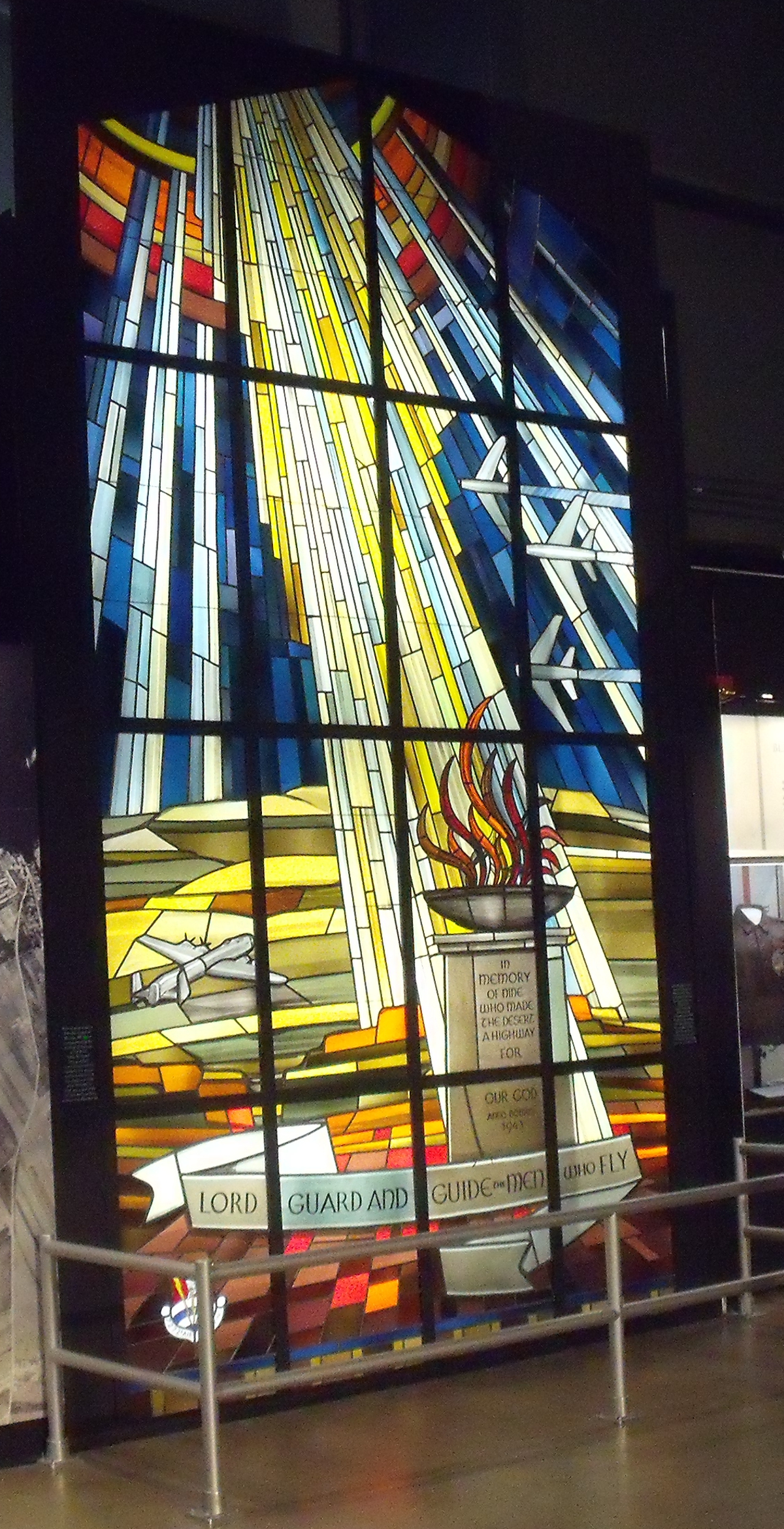
Early Years Gallery
Linda took the photo below of information about the Caquot Type R Observation Balloon. Unfortunately, her camera did not get the sign in good focus. Fear not, as the US Air Force Museum has provided the full text of this sign on their web site via this LINK: https://www.nationalmuseum.af.mil/Visit/Museum-Exhibits/Fact-Sheets/Display/Article/197400/caquot-type-r-observation-balloon/
Here is the full text from the sign:
Tethered balloons allowed World War I observers
to see as far as 40 miles behind enemy lines to spot troop movements, chart
trench systems and direct artillery fire. The observation balloon most used by
Americans was named for its designer, French engineer Lt. Albert Caquot. The
hydrogen-filled balloon could lift two passengers in its basket, along with
charting and communications equipment, plus the weight of its mooring cable, to
a height of about 4,000 feet in good weather. Normal operations were between
1,000 and 4,000 feet. During WWI, American balloon observers directed artillery
fire at targets such as troop concentrations and supply dumps. They noted more
than 1,000 enemy airplane sightings, 1,000 instances of military traffic on
railroads and roads and 400 artillery batteries.
Caquot balloons were manufactured in great numbers in WWI; nearly 1,000 were
made in the United States in 1918-1919. During World War II, the British
produced Caquots once again, but in limited numbers. Manufactured in 1944,
the balloon displayed at the museum is believed to be the only survivor. The
British used it for parachute testing and non-combat aerial observation
and photography until 1960. The British Ministry of Defense, Royal Aircraft
Establishment, presented the Caquot to the museum after it was located with
the aid of American and British WWI balloon veterans in 1975. Assisted by the
Goodyear Aerospace Corp. of Akron, Ohio, which had produced these balloons
during WWI, museum personnel mended and sealed the balloon fabric and prepared
it for inflation. It was placed on display in May 1979.
TECHNICAL NOTES:
Gas capacity: 32,200 cu. ft.
Length: 92 ft.
Diameter: 32 ft.
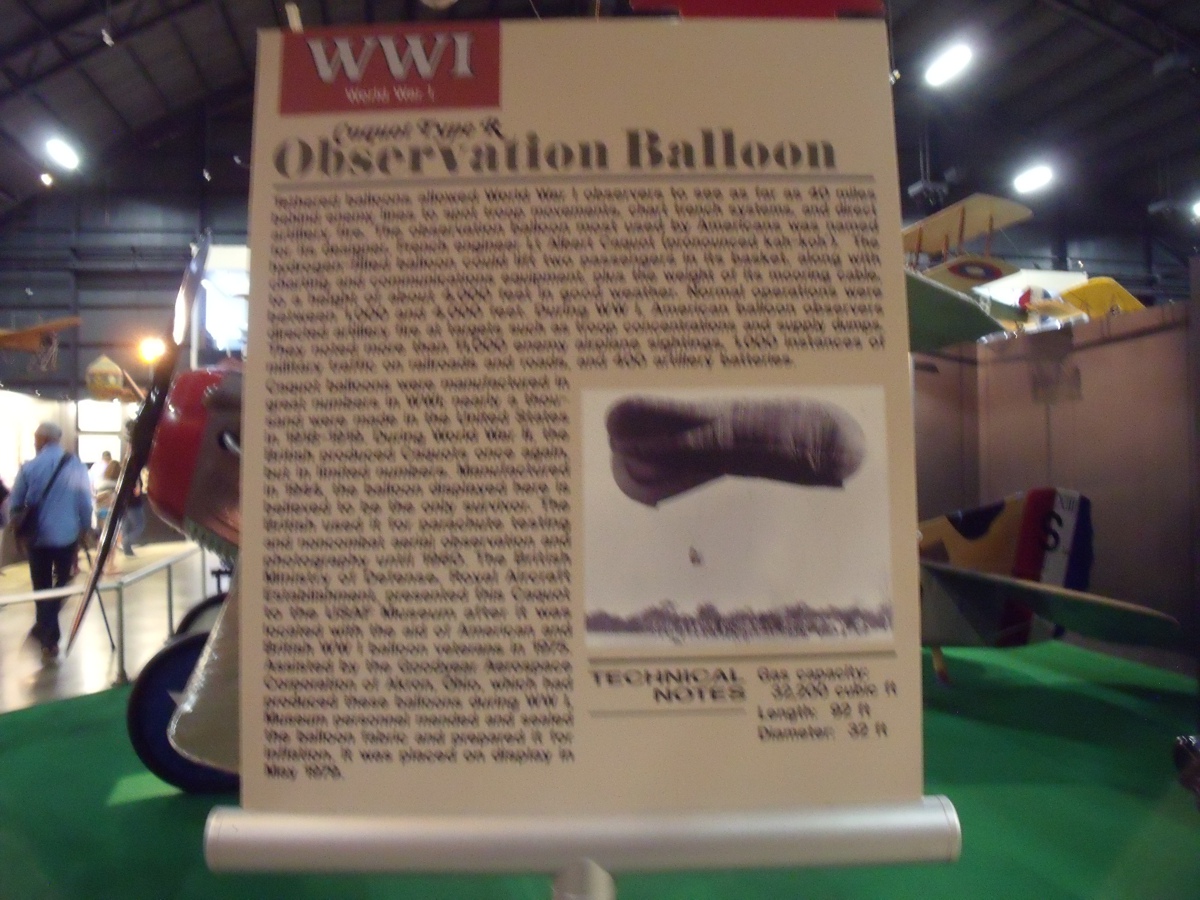
Here is her photo of the balloon displayed above the sign.
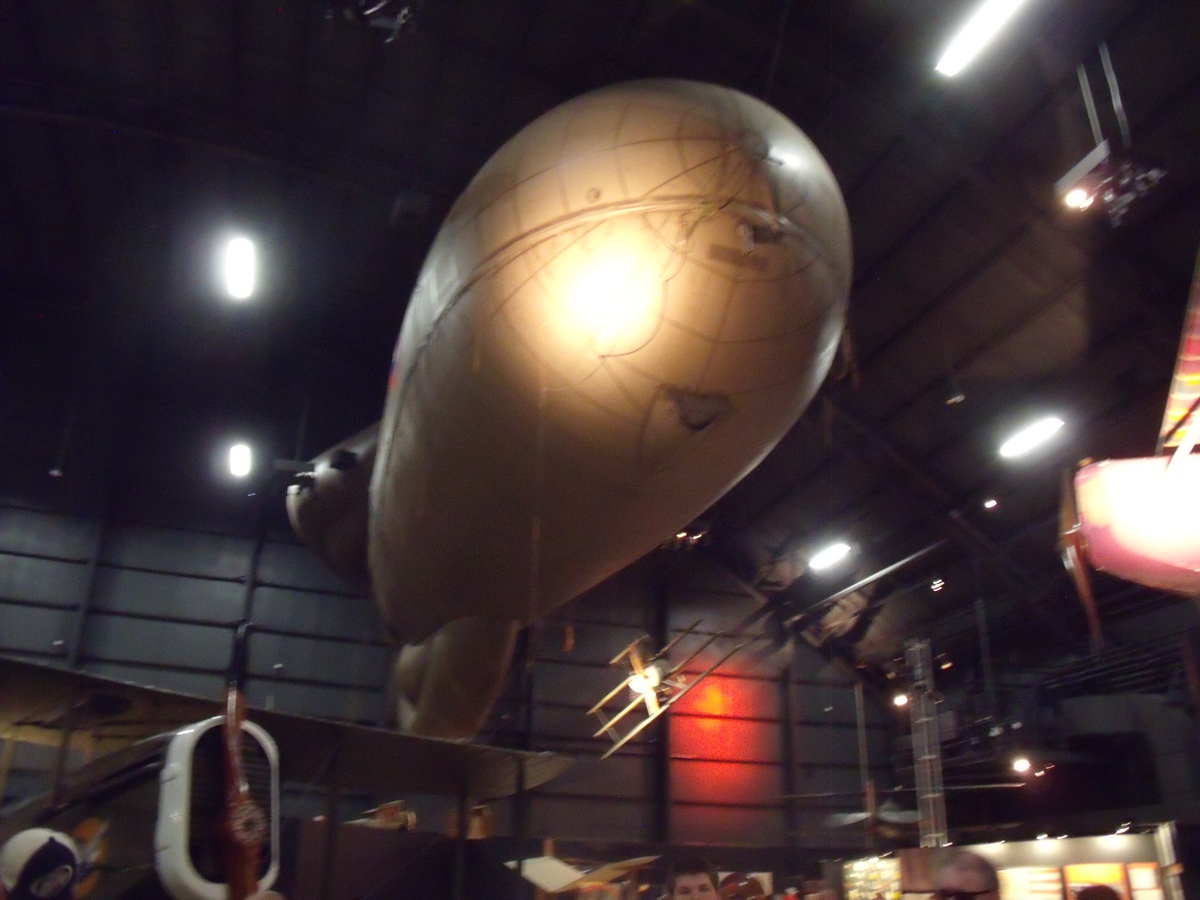
The balloon flew with a two-man crew. One of them had headphones and
a microphone to talk to artillery crews on the ground. This hangar near
the front entrance of the museum is about early flight and World War 1.
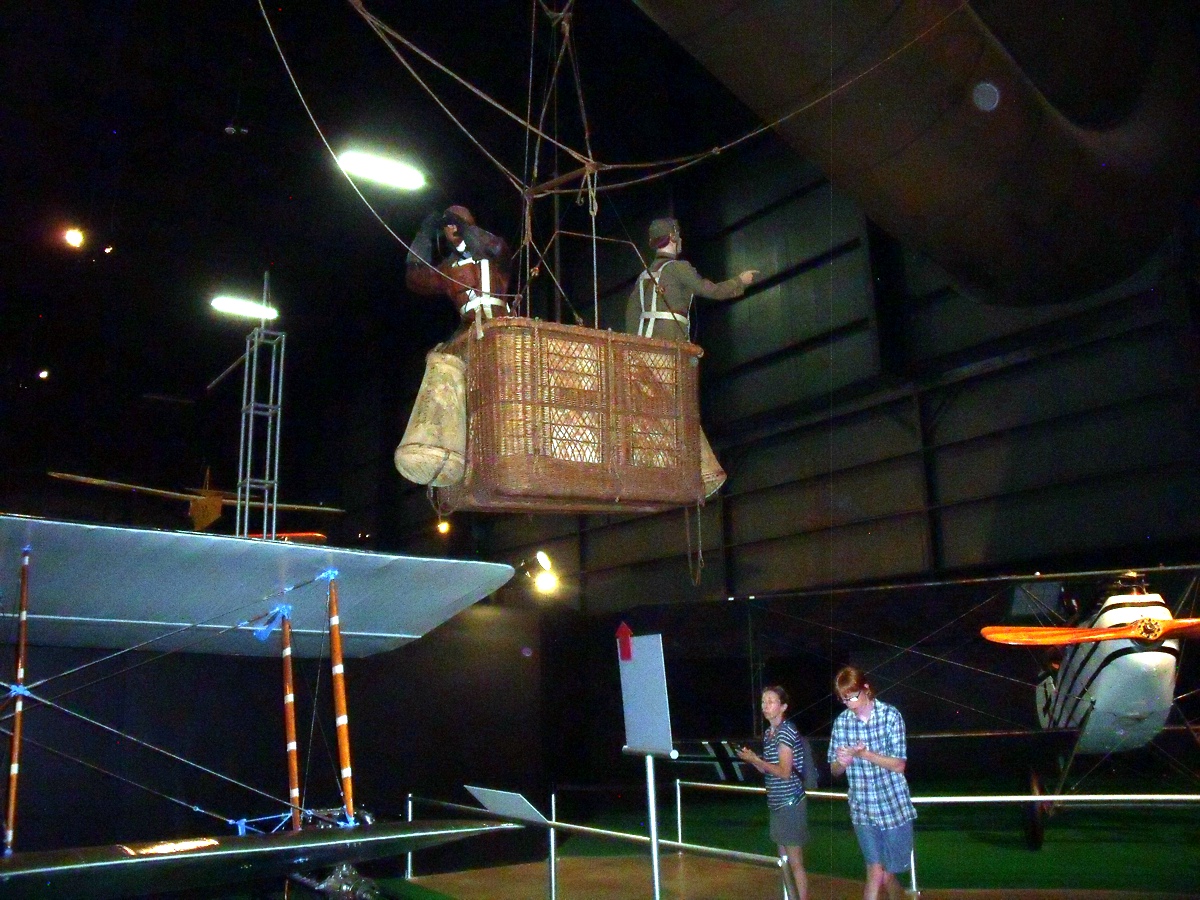
Air Force Cold War Gallery
If you saw the 1956 movie "Strategic Air Command" you had a chance to
see a B-36 Bomber in flight. The large wing with three propellers and two
jet engines on each wing is part of the B-36 at the USAF Museum. This image taken by
Linda is also about a pair of P-51 Mustang fuselages connected together to
become the F-82 fighter: https://www.nationalmuseum.af.mil/Visit/Museum-Exhibits/Fact-Sheets/Display/Article/196411/north-american-f-82b-twin-mustang/
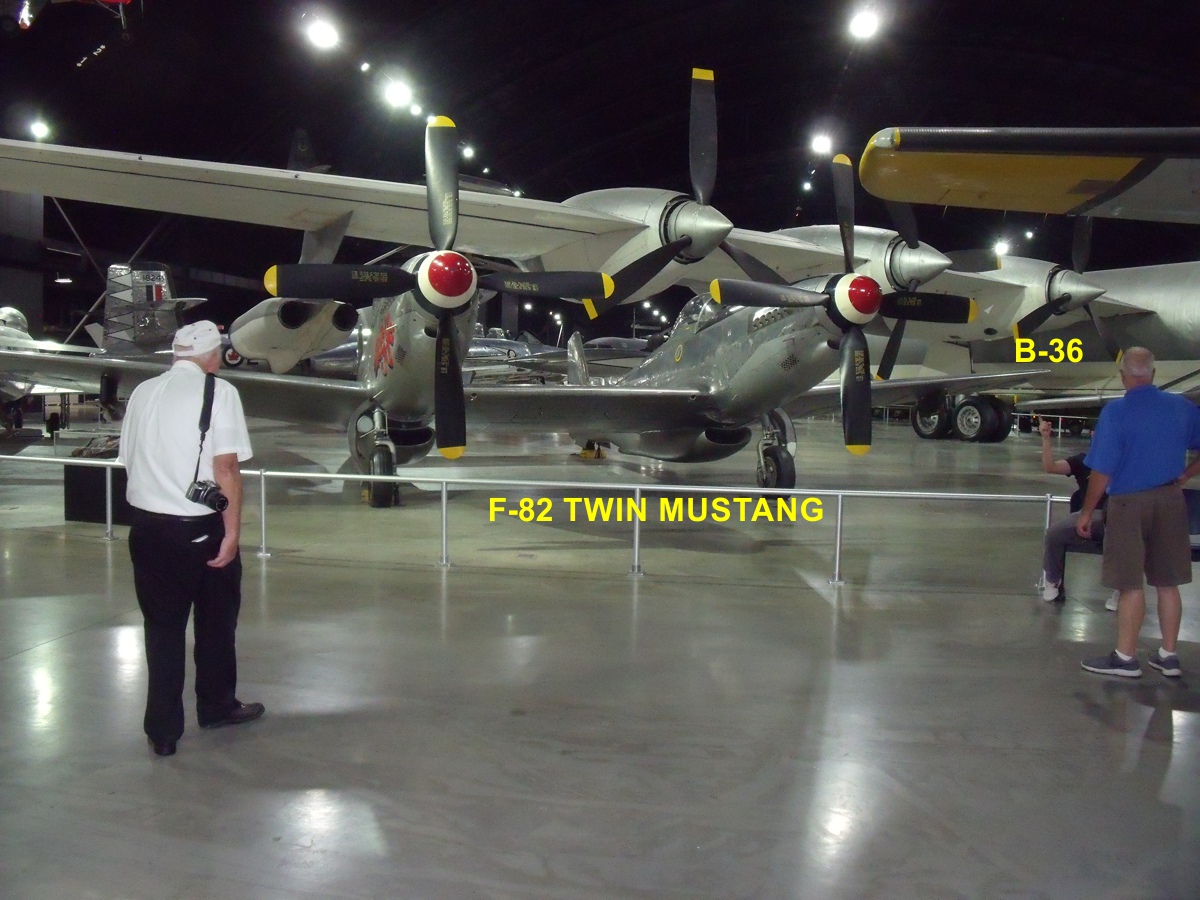
I provided the YELLOW labels on many photos taken this day at the
museum. The F-82 was the last propeller driven fighter used by the USAF
before the Jet Age arrived!
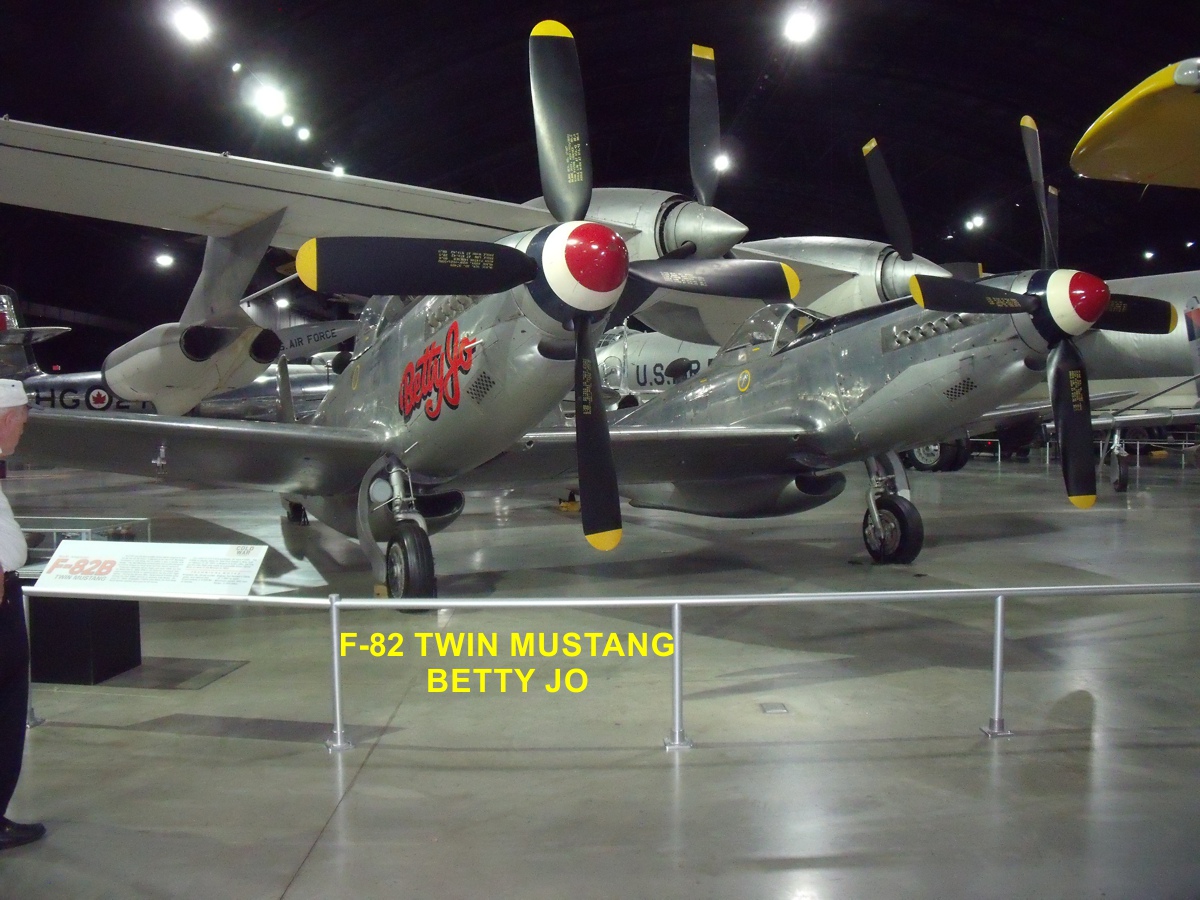
This F-86 Sabre Jet is stripped bare to show much of what made it a great
fighter aircraft during the Korean War.
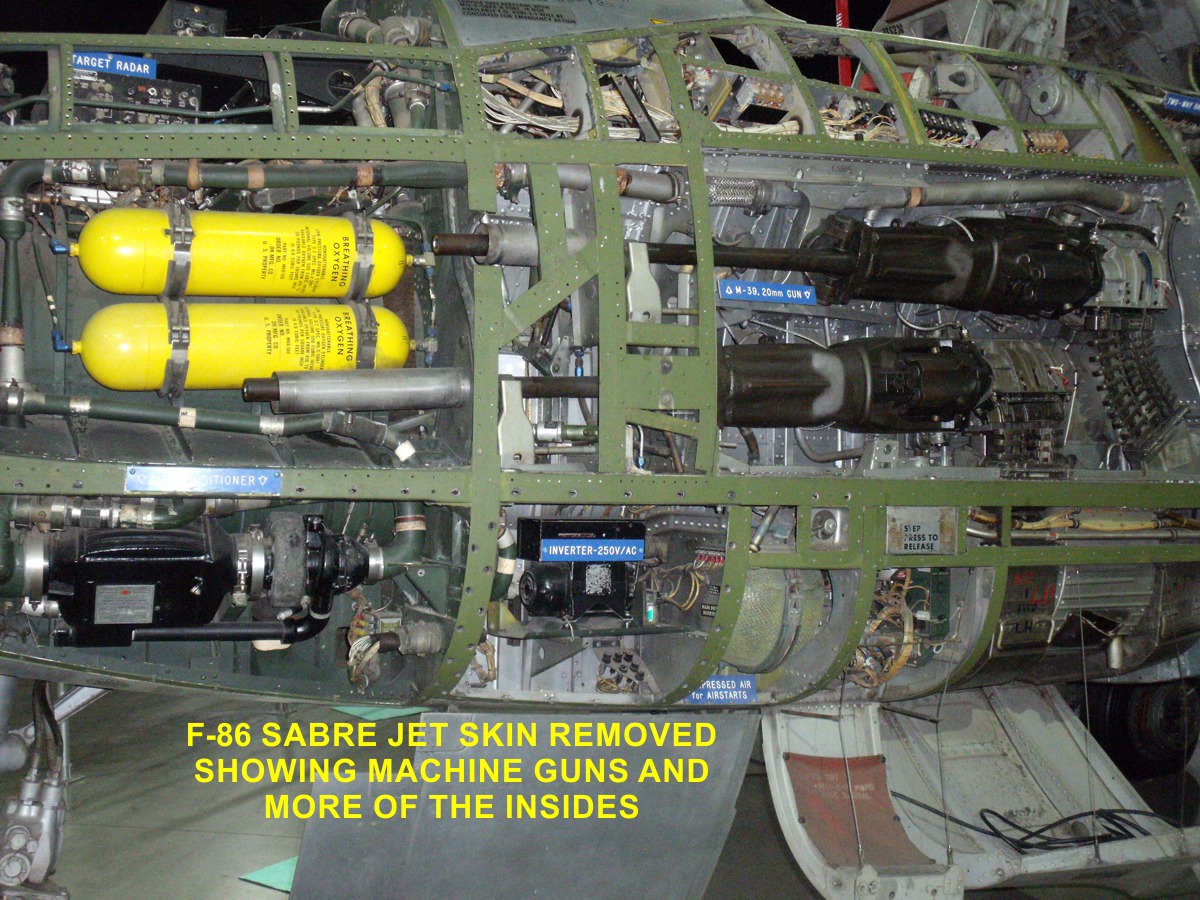
Here is second USAF museum F-86 displayed in the Korean War Gallery with
the leading edge slats extended and typical gun smoke stains.
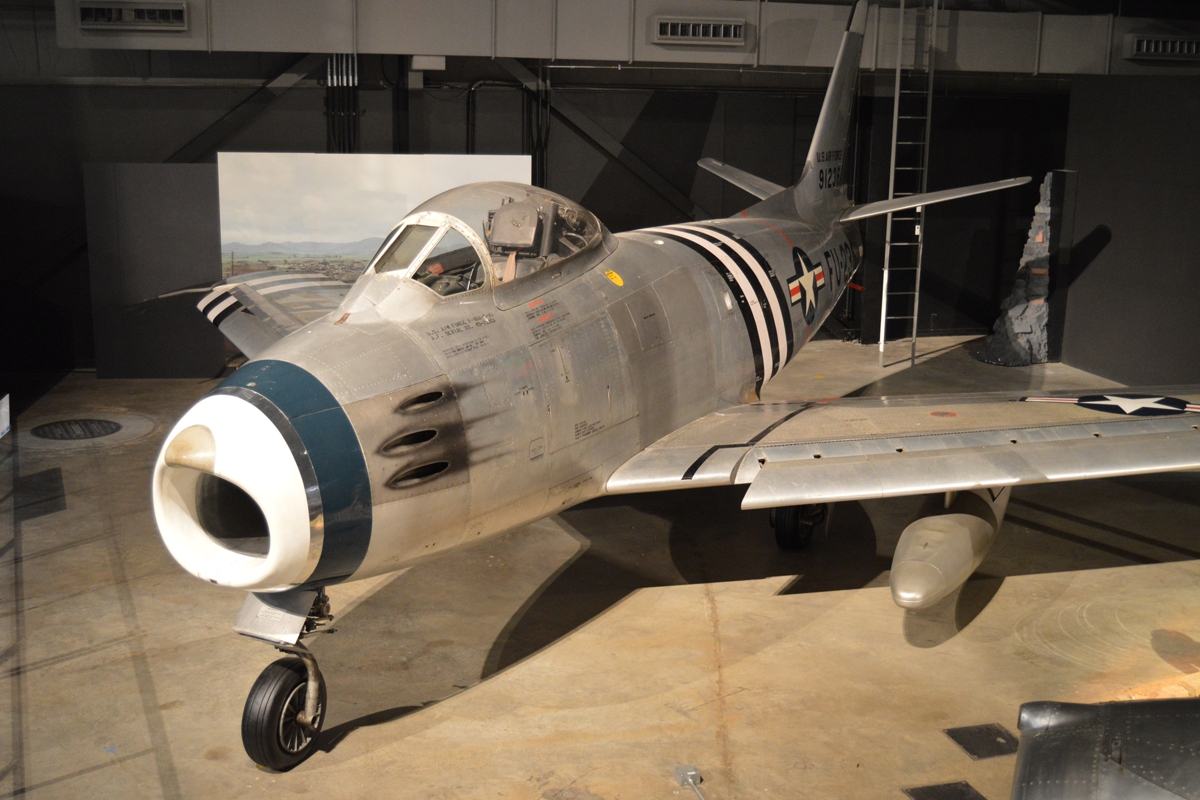
This is how a properly-dressed F-86 looks.
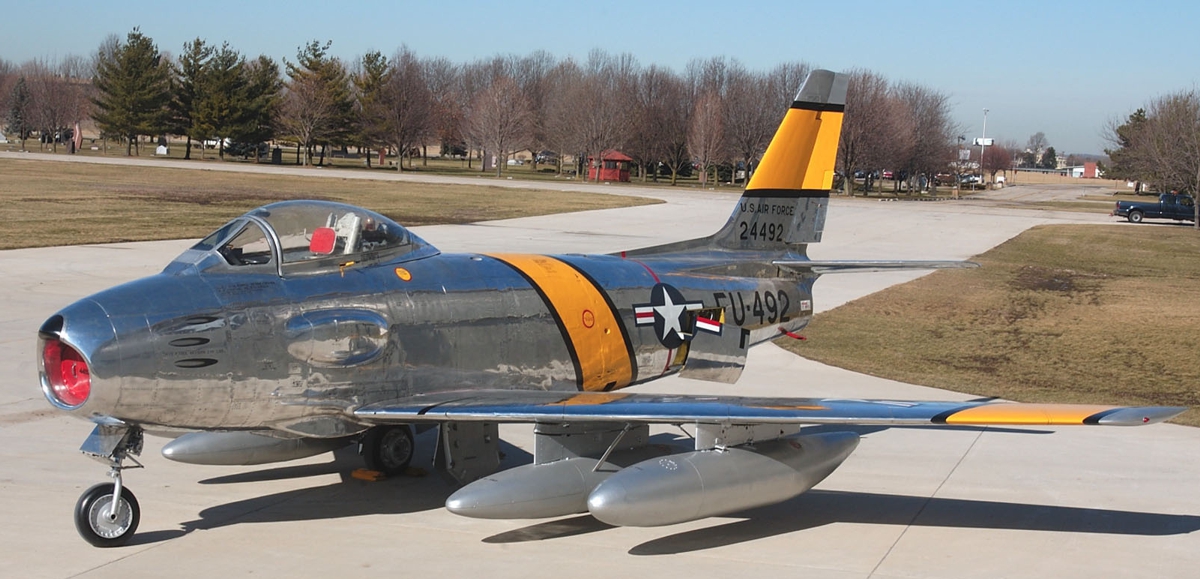
This image is dominated by the Douglas C-124 Globemaster II cargo
plane. The Korean War Gallery is that section beyond the Global Hawk seen
hanging from the ceiling in the foreground of this image. Here is the data
for the C-124: https://www.nationalmuseum.af.mil/Visit/Museum-Exhibits/Fact-Sheets/Display/Article/196101/douglas-c-124-globemaster-ii/
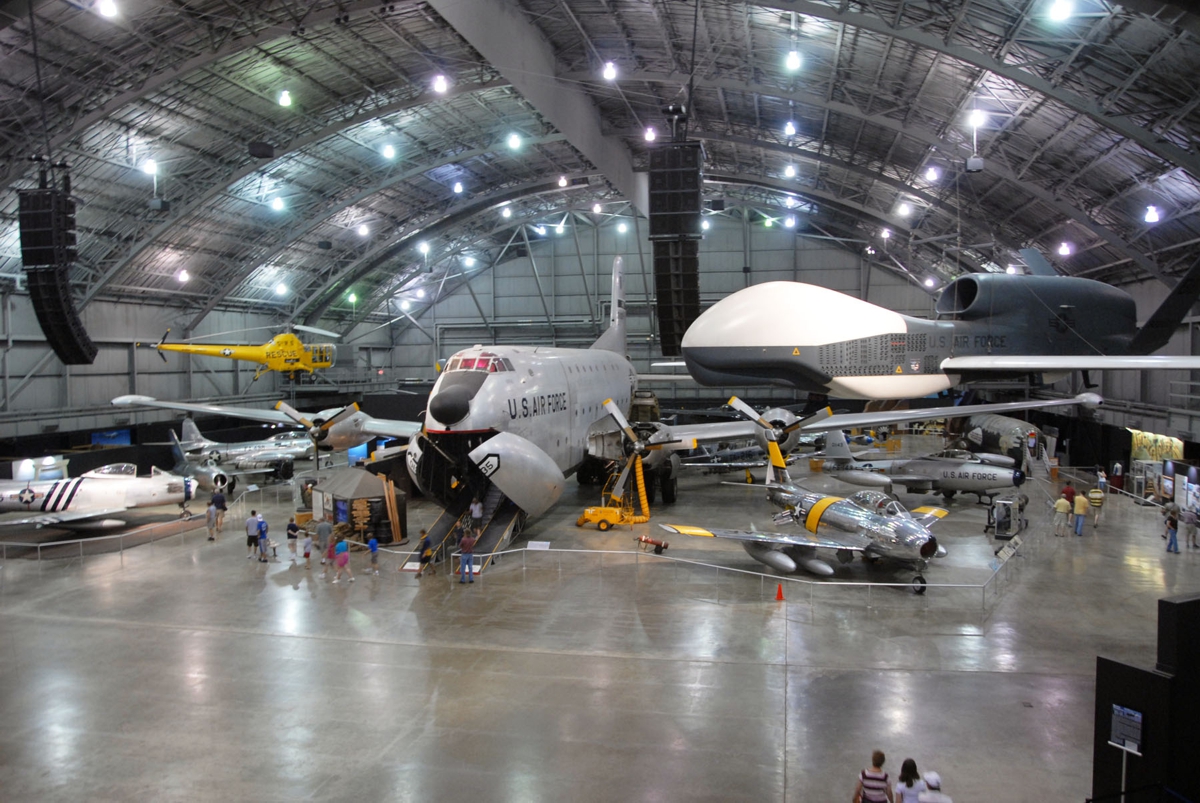
Here is the front of the B-36 in the museum. Here are models of
some types of atomic bombs that could be carried on the B-36. This hangar
is about military aircraft that were mass produced, not experimental planes.
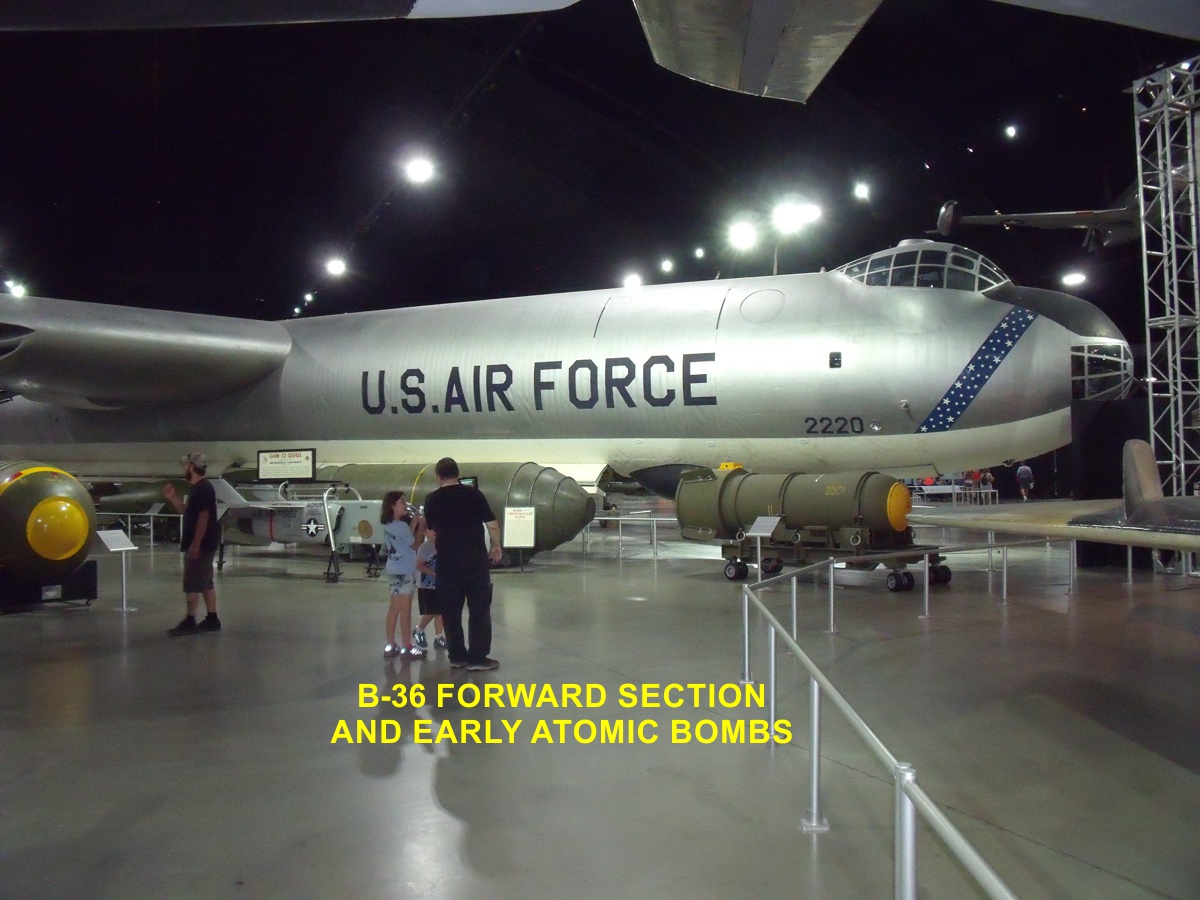
Since we talked about the B-36, lets take a look in the bomb bay.
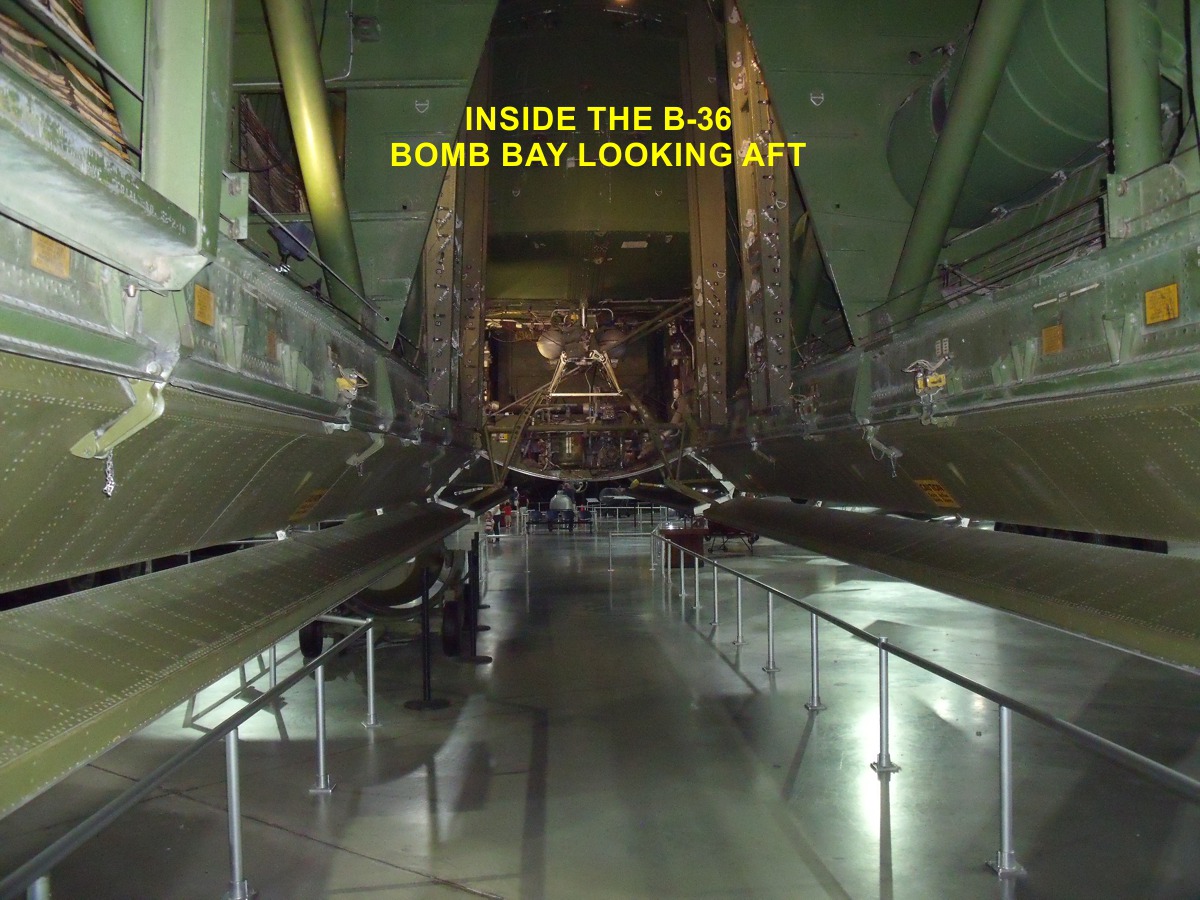
This view is from further away with a wider view of the bomb types.
That large black "bubble" at the top of this image is part of the
belly of the B-47 you will see later.
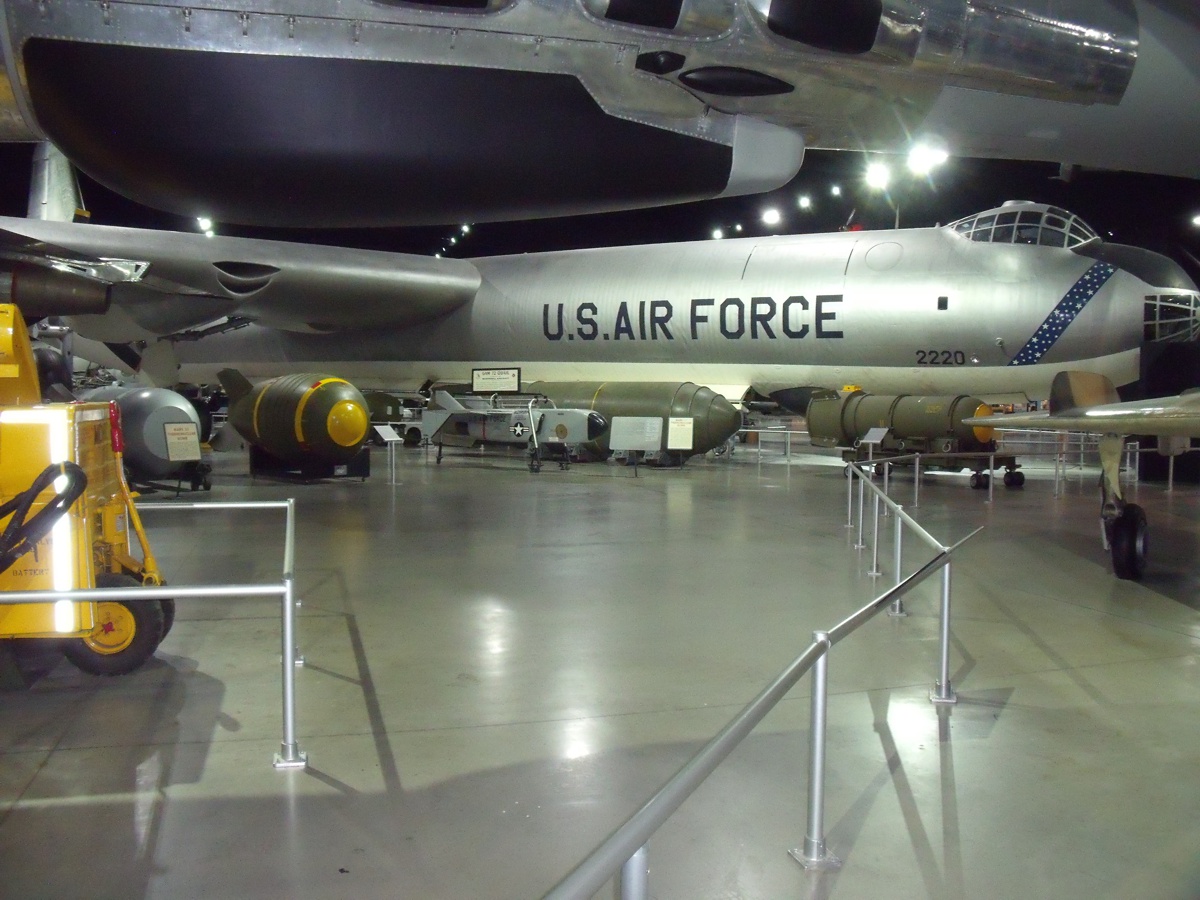
Missile Gallery
We were walking toward the last hangar with the newest displays.
Along the way the route is through an area with satellites and ICBM's.
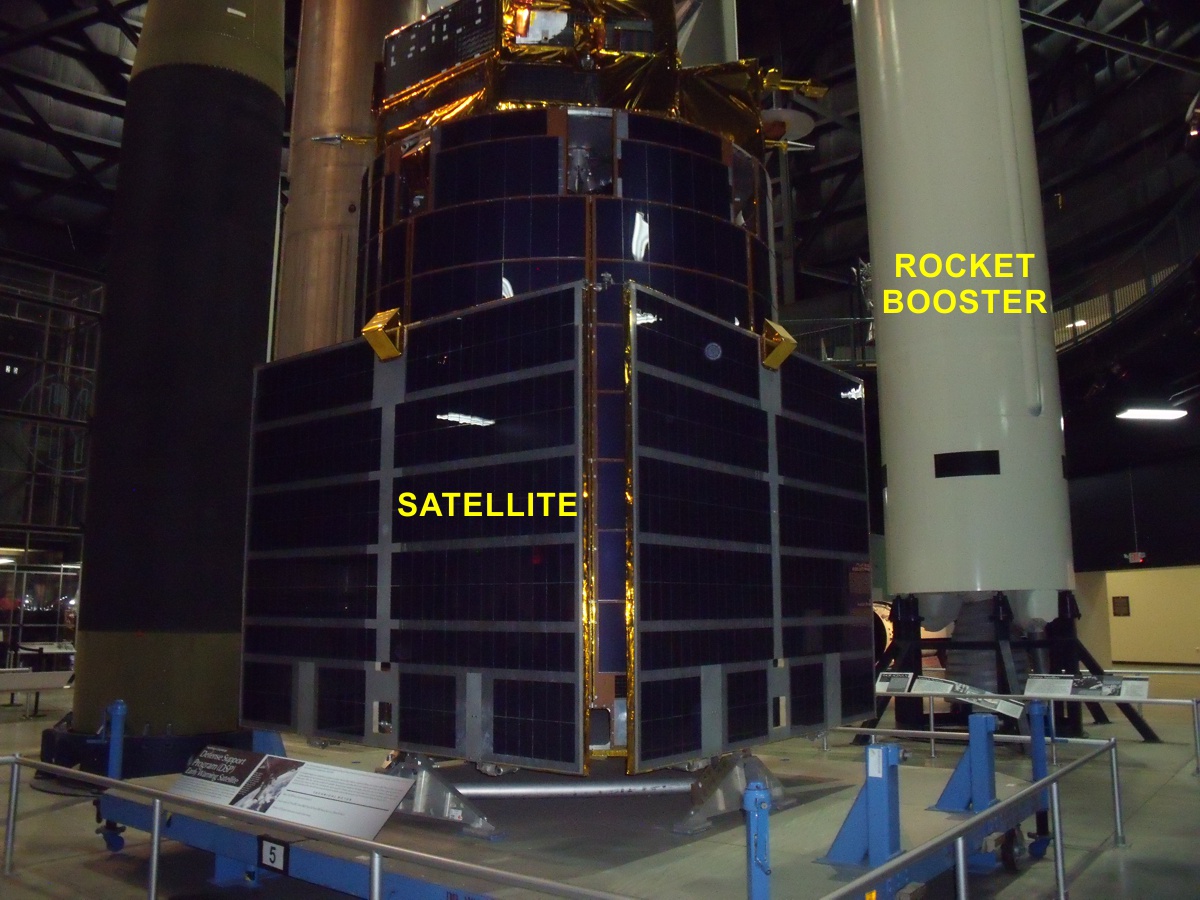
Linda focused her camera up high and did not notice the other lady until I
posted these images to a web page on March 27, 2020. These photos were
taken on July 27, 2019.
